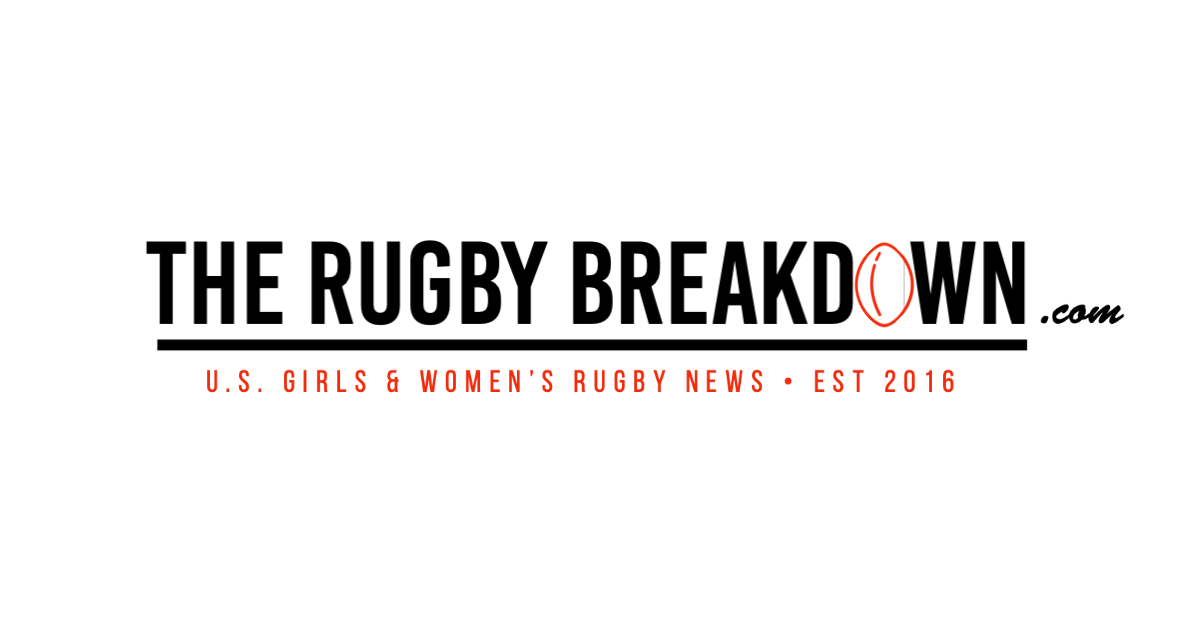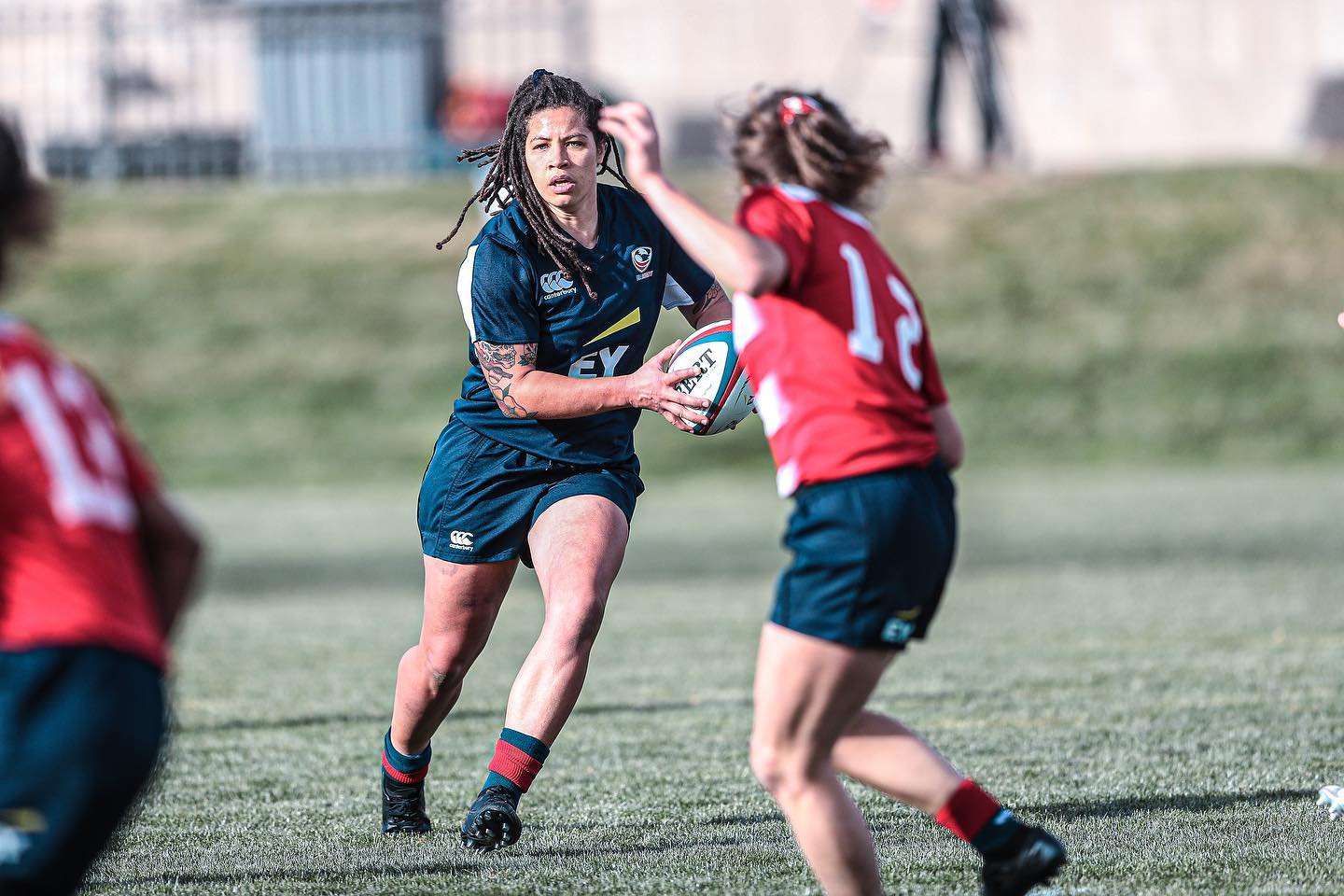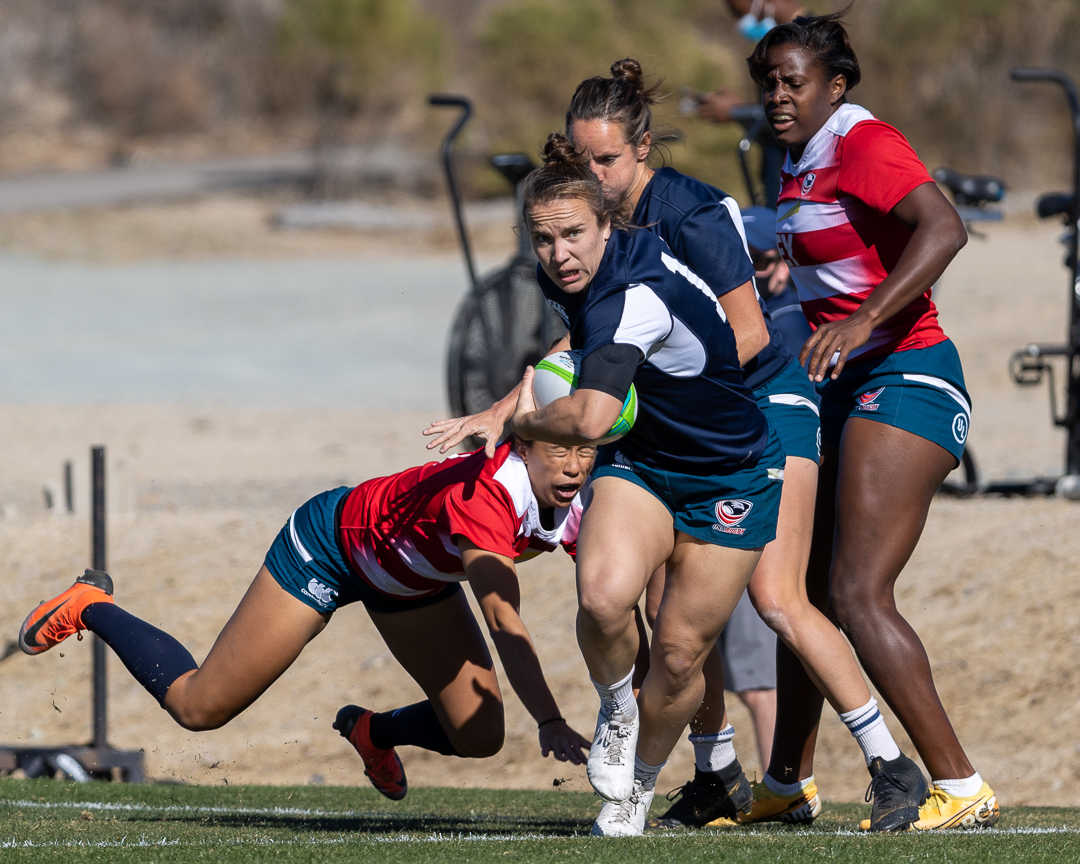The Daily Training Environment [DTE] was a massive enterprise for the USA Women 15s team, and it is a component of the programmatic review that has been occurring the past two months. Eagles head coach Rob Cain was pleased with the outcomes and banked some important lessons should a DTE ever be replicated.
The first two years of the Rugby World Cup cycle were spent on development, and 2020 was supposed to kick off the performance block. But then Covid-19 intervened, canceled all of the summer assemblies and tests, as well as the domestic fall seasons and autumn internationals.
“[The DTE] was important to them, because you can imagine the amount of disappointments they’ve had throughout the year,” Cain said. “The last two years, we’ve been working on a big development piece, and we spent a lot of time putting the right infrastructure in place. From that element, we could give them empowerment, and then we get performance. They had that taken away from them with Covid, so this was really important to them.”
Prior to arriving in Glendale, Colo., last September, a lot of that work in 2020 had been done remotely. But Covid-19 had complicated players’ situations in different ways – employment, family, schooling – and so while virtual learning was beneficial, the experience varied for everyone.
“One of the things that we have learned is: To best support the players we have to give them equal face-to-face time as remote time,” Cain emphasized. “The DTE was basically bringing all the hard work the players had done over five months remote to life. In our first real performance window, we were really focusing on standards, behaviors, and on the precision of what we’re trying to get out of sessions. We were able to introduce the beginnings of our ideal working week, cementing ‘our test week for 21’ meetings, flow of analysis, loadings, sessions totals and where players take a lot more ownership from the rugby perspective as unit leaders, generals and as individuals throughout the week.”
Rachel Johnson, Kristi Kirshe, Shelby Lin, Hope Rogers-Dellermann and Jetta Owens shared their experiences from Glendale and the Stars vs. Stripes match, and they all effused gratitude for the opportunity. The staff was also grateful, as the DTE and smaller training pods allowed for a deep dive into the individual player.
“First off the work that was done in the background from a logistics and protocols perspective was phenomenal,” Cain said. “Emilie [Bydwell], Louise [Stewart] and the medical team worked tirelessly to bring this plan to life.
“When we started designing the DTE, and we started to look at what the day would look like, myself and the rest of the coaches who were there were fully aware of how much hard work was going to be attached to this,” said Cain, who also noted that work ethic is a core element of the group’s philosophy. “So, yes, we were out on the pitch for many, many hours, but the word I’d use is ‘rewarding’ rather than ‘grueling,’ because being out there, interacting with so many players, even though they’re in different groups, that really allowed us to have more than just a snapshot. Having them every day allowed us time to really see where they were, to see their points of difference, and knowing the time it takes to develop the players to what both ‘The Eagles way’ and international rugby demands was a huge benefit. But I would be lying to say that as a ground staff we weren’t tired at times. Jamie [Burke], Sylvia [Braaten], Kate [Daley], Jade [Callen] in medical and Deanna [Nash] in logistics all worked tirelessly to best set the players up for success.”
The staff watched as healthy competition on the training pitch, in the gym and in meetings developed within pods. And when the group assembled into Stars and Stripes squads, joining forwards with backs, they were able to put full-team concepts into play.
“We created so many different pressure points for them along the way, including asking more ownership of them in terms of tactical understanding and really bringing the playing philosophies to life,” Cain said. “They really did a good job of that – of not just understanding it and retaining it, but actually developing it a stage further. So it’s a shame that we couldn’t get that second game because considering some of the players hadn’t played in 12 months – and some players hadn’t played for longer – they put on a good show [on Nov. 18].”
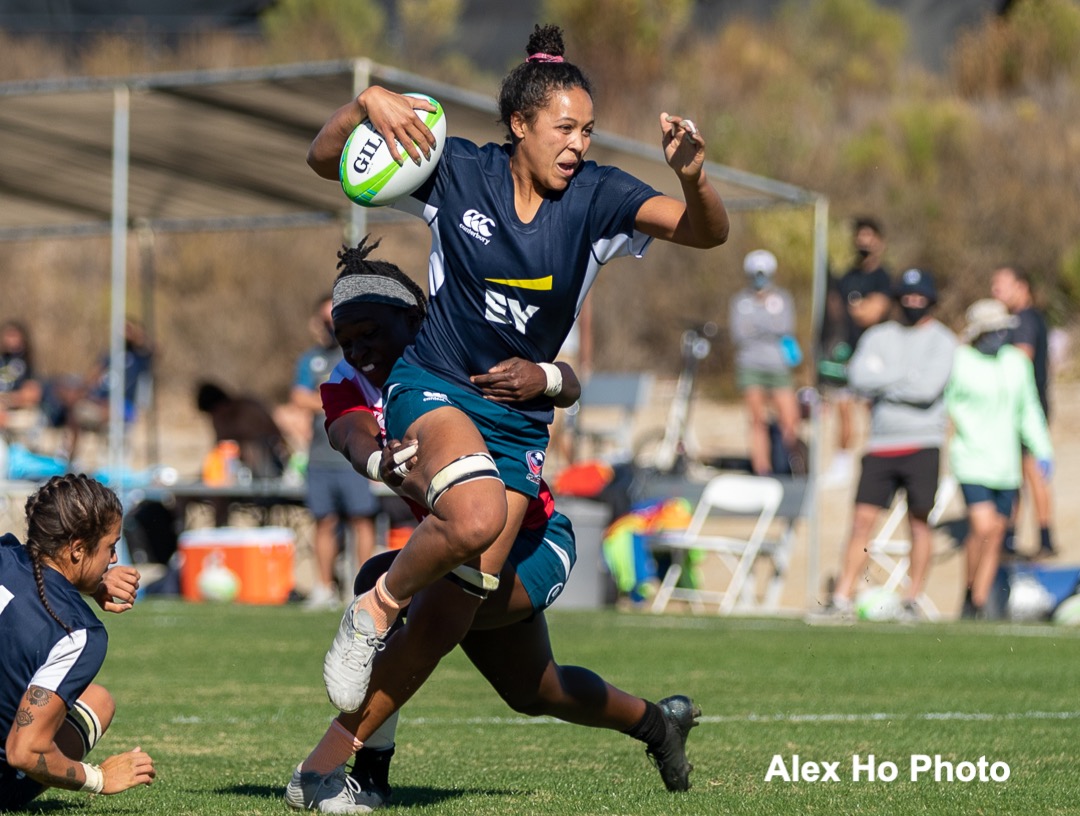
Jordan Matyas / Photo: Alex Ho (hoiho.net)
Cain indicated that many players weren’t able to attend the residency bubble for a multitude of reasons. Some were able to participate in mini-camps in Glendale, and all of the off-site players had access to remote learning.
“Designing how we could best support players not in Denver was as big a priority for us as the players in Denver,” Cain said. “Rich [Ashfield], Jen [Lui], Neil [Harris], Callum [Howells] worked tirelessly in a remote setting with meetings, presentations and video analysis to do this, and the results were there to be seen for both players who came to Denver for shorter durations and those who didn’t participate.”
So the WNT was running three programs consecutively, while also tracking overseas players. Gabby Cantorna, Jennine Detiveaux and Kate Zackary joined Exeter in the Allianz Premier 15s league in England. Kristine Sommer returned to the Harlequins, and then after the new year, Johnson and Jojo Kitlinski signed with the professional Chiefs outfit.
“We have a very talented group in the U.K. at the moment. They’ve been leaders for our team in the last two years,” Cain said. “So actually not having them involved [in the DTE] allowed some of the younger players to take over that ownership and develop some of those leadership qualities, which is going to really help those senior leaders when they’re back involved again. They’ll be able to focus more on playing rather than wade through too much, so it will be better for them.”
For Cain, any opportunity to participate in a full-time training environment is a bonus, so there was no resistance to players heading overseas instead of Colorado for the fall. The pros are receiving the same attention as the rest of the pool. Their games are clipped and reviewed during weekly meetings with Cain, and the lines of communication are active.
But with so many benefits coming out of the physical DTE in Glendale, do players who were unable to attend have ground to make up?
“I think the two biggest questions we’re looking at as we start to narrow the pool in ’21 is: How much time do we need with each individual to be able to bring the best version of themselves across the four elements that we’re working toward, so: physical, rugby, mental and environment,” Cain said. “How much time do they need to be able to get to the point where they can meet the demands of international rugby? Does that mean that some people have lost some ground? With some people it could be, but it’d be a case-by-case depending on their rugby IQ and their continued development with the remote program.”
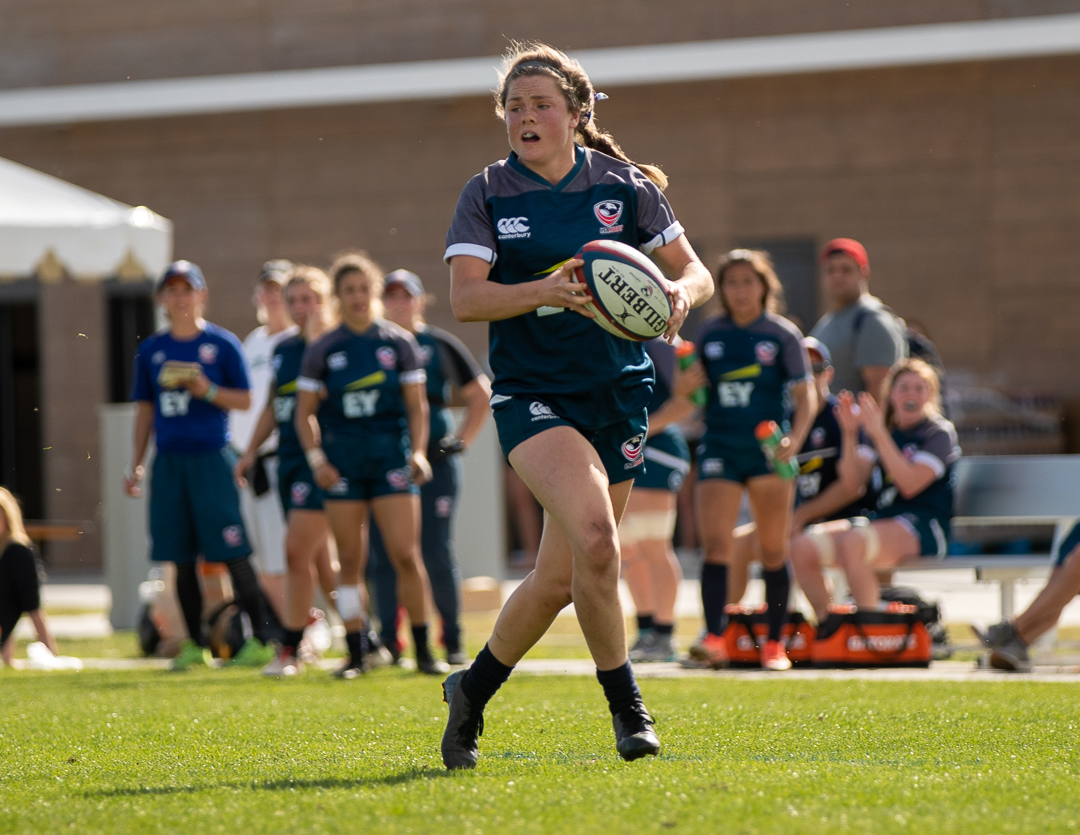
Emily Henrich / Photo: Alex Ho (hoiho.net)
Since the close of the DTE and the Stars vs. Stripes match, the WNT has been conducting a big two-year review across its entire program. Player review followed in January. Pool players received written feedback, video feedback and one-on-one meetings, and the staff had to make some very hard decisions of who could go through to the next chapter of being in a reduced WNT Player Pool and staying in the hunt for the Rugby World Cup 2021.
“Have we got the right people? Where do we need people? What type of player do we need? What type of characteristics and behaviors does a person offer and how does that all fit inside the rugby player? How does that fit within the team,” Cain described the selection process. “Then we’ll be making the pool a little bit smaller, and during the year we’ll have a few moments like that. We’re just waiting on the calendar to get confirmed.”
Cain was hoping that a 2021 calendar might be available to the players by the end of January, but also acknowledged the limits of planning during a global pandemic. February will see a return to remote learning continuing where they left off in November, challenging the players’ tactical awareness and understanding.
“The big thing that we’re aspiring to do is to know what the players know, see what the players see, allowing us to develop what they need,” Cain said, “It’s up to us as coaches to help them fill in the gaps, enable them to retain the important things for them, and develop their core and scanning skills to replicate this at the speed that any picture demands. Continuing to challenge them for the demands of international rugby. The DTE allowed us to really understand who they are as people and what they aspire to be as rugby players. And are they able to deliver those aspirations when the performance is needed?”
With such a glowing review of the DTE, and with Covid-19 restrictions still laying heavy on the country, might there be another residency?
“Oh, I hate giving away spoilers,” Cain demurred.

